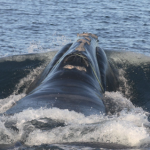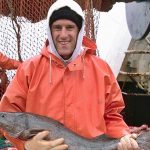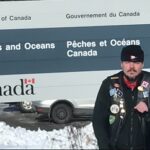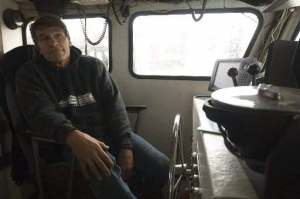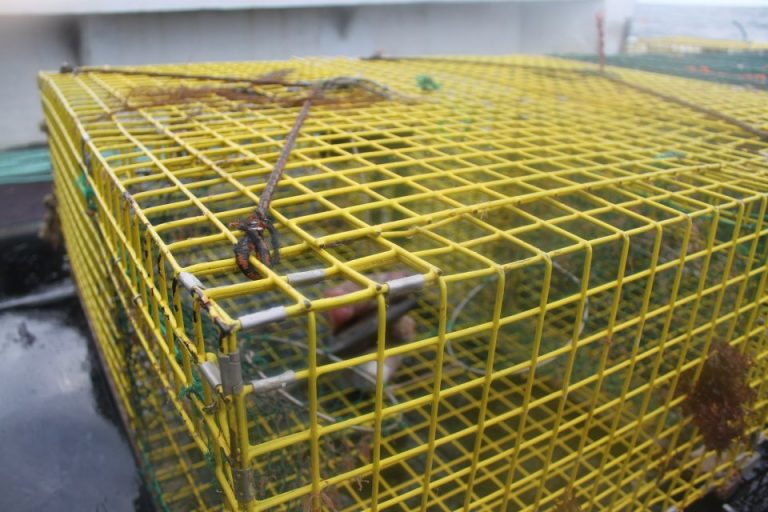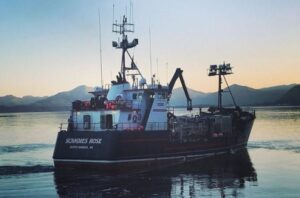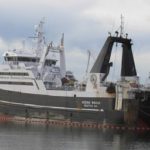Tag Archives: RAY HILBORN
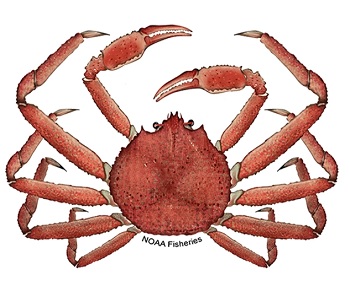
Did climate change really kill billions of snow crabs in Alaska?
In October 2022, the National Oceanic and Atmospheric Administration (NOAA) announced that the lucrative snow crab fishery in the Bering Sea would close for the first time, following a population decline of 80% between 2018 and 2022. While fisheries managers and biologists say climate change is to blame for the species’ retreat, some fishers and crab experts suggest that trawling bycatch and other fishing activity may have played a role in the snow crab’s decline. The fishery’s closure has amplified a chorus of concerns about Alaska’s trawling industry and the knowledge gaps around its potential impact on fisheries. The disappearance of billions snow crabs from the Bering Sea has captivated the world’s attention since Alaska shut down the fishery for the first time in October 2022. But where exactly did these snow crabs go? And what caused them to vanish so quickly? >click to read< 08:02
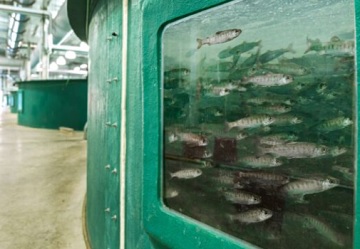
The U.S. Has Spent More Than $2 Billion on a Plan to Save Salmon – The Fish Are Vanishing Anyway.
The Carson National Fish Hatchery was among the first hatcheries funded by Congress over 80 years ago to be part of the salvation of salmon, facilities created specifically to replace the vast numbers of wild salmon killed by the building of dozens of hydroelectric dams along the Northwest’s mightiest river, the Columbia. Tucked beside a river in the woods about 60 miles northeast of Portland, Carson has 50 tanks and ponds surrounded by chain-link fencing. They sit among wood-frame fish nursery buildings and a half-dozen cottages built for hatchery workers in the 1930s. Today, there are hundreds of hatcheries in the Northwest run by federal, state and tribal governments, employing thousands and welcoming the community with visitor centers and gift shops. The fish they send to the Pacific Ocean have allowed restaurants and grocery seafood counters to offer “wild-caught” Chinook salmon even as the fish became endangered. photos, >click to read< 16:58
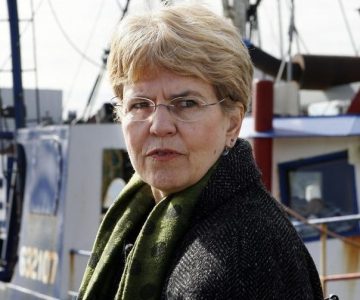
Retraction of flawed MPA study implicates larger problems in MPA science
A retraction is a Big Deal in science, especially from a prominent journal. What’s strange in this story is how the conflict of interest intersects with the science. The conflict of interest was apparent immediately upon publication, but it wasn’t until major problems in the underlying science were revealed that an investigation was launched, and the paper eventually retracted. But with increased press comes increased scrutiny. The critiques pointed out errors and impossible assumptions that strongly suggested the paper was inadequately peer reviewed. Proceedings of the National Academy of Sciences (PNAS) later determined that the person responsible for assigning Cabral et al.’s peer reviewers, Dr. Jane Lubchenco, had a conflict of interest. >click to read< 10:36
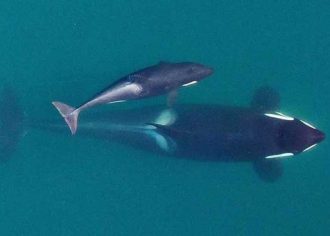
Expert skeptical of Washington state’s orca-saving proposal
“The question is: What’s the problem and what’s the solution?” Ray Hilborn told KIRO Radio’s Dave Ross. “And I have to say, I’m a bit skeptical about much of the discussion that has been raised.” Hilborn is a professor of fisheries and aquatic sciences at the University of Washington. There are many reasons for his skepticism, but a big part of it is that the conversation around the problem has missed the mark on many key points. “It’s almost certainly multiple causes for the decline of Southern Resident Killer Whales, but what I haven’t heard in the discussion is pointing out that Northern Resident Killer Whales, which also depend on Chinook salmon, are doing just fine. There are probably 5-6 times more of them than the Southern residents. Audio report, >click to read<17:47
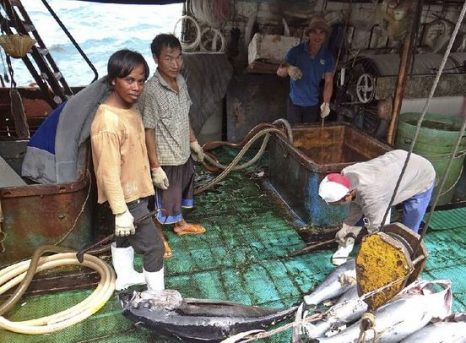
Devastating report has seafood dealer on his heels, angry – U.S. senator calls for an investigation
A national seafood distributor is defending its reputation as sales plummet after The Associated Press found it was not living up to a guarantee that all of its seafood was wild, sustainable, traceable and caught by local fishermen. Sea To Table owner Sean Dimin said most problems identified by the AP were honest mistakes or the result of miscommunication, and some supporters came to his defense. But four former employees said they raised concerns about mislabeling, the blending of imports and deceptive marketing practices years ago, and were ignored or silenced. A U.S. senator has called for an investigation, and a community-supported fishery filed cease-and-desist orders, demanding Sea To Table stop deceptive marketing. >click to read<13:25
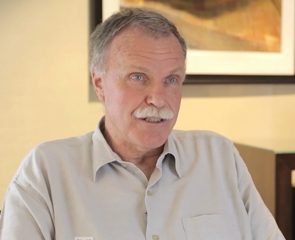
Ray Hilborn: New study provides no new information on global fishing footprint
University of Washington fisheries researcher Ray Hilborn said that a new study using satellite data from industrial fishing vessels to map global fishing effort fails to provide any new insight, despite media reports indicating otherwise. The study, published in Science in February, used messages transmitted between 2012 and 2016 from the automatic identification systems (AIS) of more than 70,000 industrial fishing vessels to create a global footprint, concluding that “industrial fishing occurs in over 55 percent of ocean area,” according to the abstract. But Hilborn said the vessels monitored for the study were in large part tuna boats over 100 feet, which have been monitored for decades. >click to read< 11:17
Ray Hilborn tells US Senate overfishing shouldn’t be most important concern
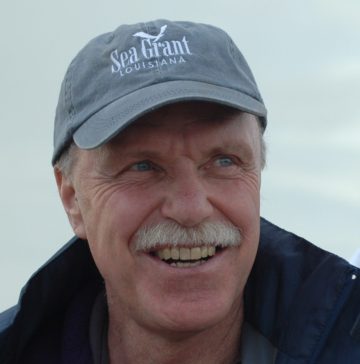 A U.S. Senate subcommittee considering the reauthorization of the Magnuson-Stevens Act heard additional testimony Tuesday, with a University of Washington researcher telling lawmakers the U.S. is leaving money in the ocean. Ray Hilborn, a professor at the university’s School of Aquatic and Fishery Sciences, noted that in many cases fisheries aren’t even bringing in half of the total allowable catch in some seasons. For example, in 2015, mixed bottom commercial fishermen caught USD 65 million (EUR 55.1 million) worth of fish available in the West Coast. The total allowable catch had an estimated value around USD 168 million (EUR 142.5 million). click here to read the story 12:20
A U.S. Senate subcommittee considering the reauthorization of the Magnuson-Stevens Act heard additional testimony Tuesday, with a University of Washington researcher telling lawmakers the U.S. is leaving money in the ocean. Ray Hilborn, a professor at the university’s School of Aquatic and Fishery Sciences, noted that in many cases fisheries aren’t even bringing in half of the total allowable catch in some seasons. For example, in 2015, mixed bottom commercial fishermen caught USD 65 million (EUR 55.1 million) worth of fish available in the West Coast. The total allowable catch had an estimated value around USD 168 million (EUR 142.5 million). click here to read the story 12:20
Hearing: Reauthorization of the Magnuson-Stevens Fishery Conservation and Management Act: Fisheries Science – click here
Everyone’s Mad About Fugitive Salmon in the Pacific Northwest!
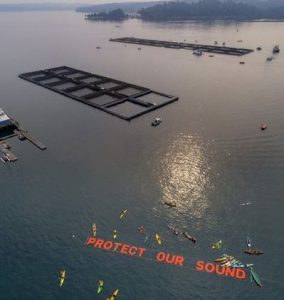 In a giant refrigerated warehouse 90 miles north of Seattle, 43,500 Atlantic salmon were stacked in plastic crates, frozen pariahs in a kingdom where Pacific salmon rule. For weeks, locals used nets to chase down the intruders, not to eat them or sell them, but to get them out of the water. Native fishermen who’ve worked Puget Sound for decades mocked them for looking different. Chefs and foodies refused to so much as lay a boning knife on them. Scientists, for their part, say they’re perfectly edible — a good source of protein in a world where increasing numbers of people could use some. But nobody is listening. click here to read the story 09:01
In a giant refrigerated warehouse 90 miles north of Seattle, 43,500 Atlantic salmon were stacked in plastic crates, frozen pariahs in a kingdom where Pacific salmon rule. For weeks, locals used nets to chase down the intruders, not to eat them or sell them, but to get them out of the water. Native fishermen who’ve worked Puget Sound for decades mocked them for looking different. Chefs and foodies refused to so much as lay a boning knife on them. Scientists, for their part, say they’re perfectly edible — a good source of protein in a world where increasing numbers of people could use some. But nobody is listening. click here to read the story 09:01
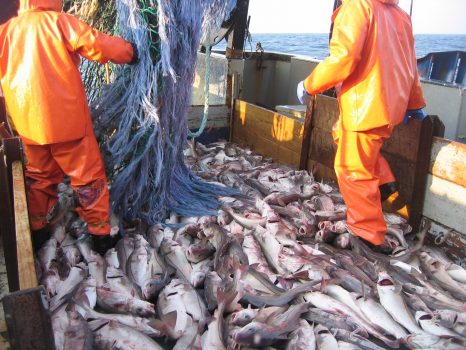
Study Reviews Trawler Effects on Seabed
An international group has taken a close look at how different types of bottom trawling affect the seabed. It finds that all trawling is not created equal — the most benign type removes 6 percent of the animal and plant life on the seabed each time the net passes, while the most other methods remove closer to a third. A University of Washington professor is among the main authors on the study, led by Bangor University in the U.K. and published July 17 in the Proceedings of the National Academy of Sciences. The meta-analysis looks at 70 previous studies of bottom trawling, most in the Eastern U.S. and Western Europe. It looks across those studies to compare the effects on the seabed of four techniques: otter trawling, a common method that uses two “doors” towed vertically in the water or along the bottom to hold the net open; beam trawls, which hold the net open with a heavy metal beam; towed dredges, which drag a flat or toothed metal bar directly along the seafloor; and hydraulic dredges, which use water to loosen the seabed and collect animals that live in the sediment. click here to read the story 16:04
Ray Hilborn: World fish stocks stable
 Speaking at the SeaWeb Seafood Summit on Wednesday, 7 June in Seattle, Washington, U.S.A., University of Washington fisheries researcher Ray Hilborn said the perception that the world’s fish stocks are declining is incorrect, and that fishing could sustainably be stepped up in areas with good management. “There is a very broad perception that fish stocks around the world are declining. Many news coverages in the media will always begin with ‘fish stocks in the world are declining.’ And this simply isn’t true. They are increasing in many places and in fact, globally, the best assessments are that fish stocks are actually stable and probably increasing on average now,” Hilborn said. click here to read the story 09:57
Speaking at the SeaWeb Seafood Summit on Wednesday, 7 June in Seattle, Washington, U.S.A., University of Washington fisheries researcher Ray Hilborn said the perception that the world’s fish stocks are declining is incorrect, and that fishing could sustainably be stepped up in areas with good management. “There is a very broad perception that fish stocks around the world are declining. Many news coverages in the media will always begin with ‘fish stocks in the world are declining.’ And this simply isn’t true. They are increasing in many places and in fact, globally, the best assessments are that fish stocks are actually stable and probably increasing on average now,” Hilborn said. click here to read the story 09:57
D.B. Pleschner: Study: No correlation between forage fish, predator populations
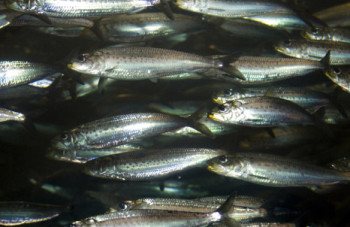 On April 9-10, the Pacific Fishery Management Council is meeting in Sacramento to deliberate on anchovy management and decide on 2017 harvest limits for sardine, two prominent west coast forage fish. Extreme environmental groups like Oceana and Pew have plastered social media with allegations that the anchovy population has crashed, sardines are being overfished and fisheries should be curtailed, despite ample evidence to the contrary. Beyond multiple lines of recent evidence that both sardines and anchovy populations are increasing in the ocean, a new study published this week in the journal Fisheries Research finds that the abundance of these and other forage fish species is driven primarily by environmental cycles with little impact from fishing, and well-managed fisheries have a negligible impact on predators — such as larger fish, sea lions and seabirds. This finding flies directly in the face of previous assumptions prominent in a 2012 study commissioned by the Lenfest Ocean Program, funded by the Pew Charitable Trusts, heirs of Sun Oil Company. The Lenfest study concluded that forage fish are twice as valuable when left in the water to be eaten by predators and recommended slashing forage fishery catch rates by 50 to 80 percent. click here to continue reading the article 20:39
On April 9-10, the Pacific Fishery Management Council is meeting in Sacramento to deliberate on anchovy management and decide on 2017 harvest limits for sardine, two prominent west coast forage fish. Extreme environmental groups like Oceana and Pew have plastered social media with allegations that the anchovy population has crashed, sardines are being overfished and fisheries should be curtailed, despite ample evidence to the contrary. Beyond multiple lines of recent evidence that both sardines and anchovy populations are increasing in the ocean, a new study published this week in the journal Fisheries Research finds that the abundance of these and other forage fish species is driven primarily by environmental cycles with little impact from fishing, and well-managed fisheries have a negligible impact on predators — such as larger fish, sea lions and seabirds. This finding flies directly in the face of previous assumptions prominent in a 2012 study commissioned by the Lenfest Ocean Program, funded by the Pew Charitable Trusts, heirs of Sun Oil Company. The Lenfest study concluded that forage fish are twice as valuable when left in the water to be eaten by predators and recommended slashing forage fishery catch rates by 50 to 80 percent. click here to continue reading the article 20:39
Ray Hilborn study disputes previous findings on forage fish
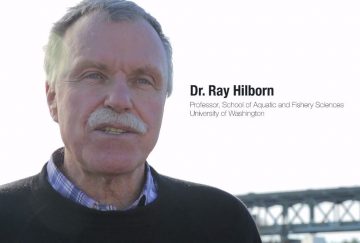 A new study has been published today by a scientific group led by University of Washington fisheries researcher Ray Hilborn that disputes previous findings on the impact of human and natural predation on forage fish such as anchovies, sardines and herring. The study, published in the scientific journal Fisheries Research, found that human fishing for forage fish does not have as great an impact on the food chain as previously thought, given that humans typically catch fish of much larger size than those typically hunted and eaten by non-human species. The study also decouples the link between the size of forage fish populations and the populations of species that predate on forage fish. “What we found is that there is essentially no relationship between how many forage fish there are in the ocean and how well predators do in terms of whether the populations increase or decrease,” Hilborn said in a video explaining the study’s findings. Video, continue reading the story here 11:47
A new study has been published today by a scientific group led by University of Washington fisheries researcher Ray Hilborn that disputes previous findings on the impact of human and natural predation on forage fish such as anchovies, sardines and herring. The study, published in the scientific journal Fisheries Research, found that human fishing for forage fish does not have as great an impact on the food chain as previously thought, given that humans typically catch fish of much larger size than those typically hunted and eaten by non-human species. The study also decouples the link between the size of forage fish populations and the populations of species that predate on forage fish. “What we found is that there is essentially no relationship between how many forage fish there are in the ocean and how well predators do in terms of whether the populations increase or decrease,” Hilborn said in a video explaining the study’s findings. Video, continue reading the story here 11:47
Obama’s new ocean preserves are bad for the environment and for people
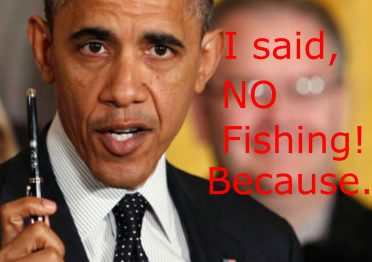 Who wants to save the oceans? Short answer: everyone, especially politicians. A less frequently asked question is whether their high-profile efforts always work. Right now, world leaders seem to want to see who can declare the biggest marine protected areas, or MPAs, in their territory. MPAs are kinds of national parks for sea life that extends from ocean surface to ocean floor. Commercial fishing and other undersea ventures are banned in them. They are popping up everywhere. In August, President Obama announced one in the western Pacific Ocean that is 50 per cent bigger than Texas. In September he created another, more modest one off the coast of New England. Britain announced yet another MPA in September around St. Helena Island in the south Pacific. It is half the size of the Lone Star State. In fact, the MPA movement has become a religion with accepted articles of faith that more and bigger are better. This current obsession is bad for the oceans, bad for the global environment, and bad for people. Consider what the imposition of an MPA can do to the economy and livelihood of local fishers, who are unable to easily pick up and move elsewhere. Some fishermen in New England are warning that they could go out of business as a result of the new Atlantic marine preserve. Read the op-ed here 10:48
Who wants to save the oceans? Short answer: everyone, especially politicians. A less frequently asked question is whether their high-profile efforts always work. Right now, world leaders seem to want to see who can declare the biggest marine protected areas, or MPAs, in their territory. MPAs are kinds of national parks for sea life that extends from ocean surface to ocean floor. Commercial fishing and other undersea ventures are banned in them. They are popping up everywhere. In August, President Obama announced one in the western Pacific Ocean that is 50 per cent bigger than Texas. In September he created another, more modest one off the coast of New England. Britain announced yet another MPA in September around St. Helena Island in the south Pacific. It is half the size of the Lone Star State. In fact, the MPA movement has become a religion with accepted articles of faith that more and bigger are better. This current obsession is bad for the oceans, bad for the global environment, and bad for people. Consider what the imposition of an MPA can do to the economy and livelihood of local fishers, who are unable to easily pick up and move elsewhere. Some fishermen in New England are warning that they could go out of business as a result of the new Atlantic marine preserve. Read the op-ed here 10:48
MPAs: Closing parts of the ocean to fishing not enough to protect marine ecosystems
 A University of Washington fisheries professor argues this week that saving biodiversity in the world’s oceans requires more than banning fishing with marine protected areas, or oceanic wilderness areas. In a three-page editorial published this week in the journal Nature, he argues that this increasingly popular conservation strategy is not as effective as properly managing recreational and commercial fisheries. “There’s this idea that the only way you can protect the ocean is by permanently closing parts of the ocean to fishing, with no-take areas,” said Ray Hilborn, a professor in the UW’s School of Aquatic and Fishery Sciences. “You protect biodiversity better by regulating fisheries over the country’s entire economic zone. Several environmental organizations have set a longer-term goal of making 30 percent of the world’s oceans into no-take marine protected areas by the year 2030. But Hilborn believes this is not the best way to protect global marine ecosystems. Read the rest here 20:48
A University of Washington fisheries professor argues this week that saving biodiversity in the world’s oceans requires more than banning fishing with marine protected areas, or oceanic wilderness areas. In a three-page editorial published this week in the journal Nature, he argues that this increasingly popular conservation strategy is not as effective as properly managing recreational and commercial fisheries. “There’s this idea that the only way you can protect the ocean is by permanently closing parts of the ocean to fishing, with no-take areas,” said Ray Hilborn, a professor in the UW’s School of Aquatic and Fishery Sciences. “You protect biodiversity better by regulating fisheries over the country’s entire economic zone. Several environmental organizations have set a longer-term goal of making 30 percent of the world’s oceans into no-take marine protected areas by the year 2030. But Hilborn believes this is not the best way to protect global marine ecosystems. Read the rest here 20:48
Ray Hilborn Responds to the opportunistic attack of Greenpeace
 I would like to thank Greenpeace for offering this opportunity to advertise our research and its results. Greenpeace is unable to attack the science I and my collaborators do; science that threatens their repeated assertions that overfishing is universal and that the oceans are being emptied. On the contrary it is clear that where effective fisheries management is applied, stocks are increasing not declining, and this is true in North American and Europe as well as a number of other places. Overfishing certainly continues to be a problem in the Mediterranean, much of Asia and Africa. The timing of Greenpeace’s attack is not random. In two weeks I will receive the International Fisheries Science Prize at the World Fisheries Congress. http://international.fisheries.org/requestfor-nominations-for-the-2016-international-fisheries-science-prize/ This prize is awarded every four years by fisheries science organizations from a number of countries including the U.S., Australia and Japan. In my plenary address I will be showing where overfishing is declining or largely eliminated, as well as where it remains a problem. This is a message Greenpeace seeks to discredit. Instead of focusing on the science, Greenpeace has alleged that I failed to disclose “large amounts of money from the fishing industry and other corporate interests.” Read the rest here 12:43
I would like to thank Greenpeace for offering this opportunity to advertise our research and its results. Greenpeace is unable to attack the science I and my collaborators do; science that threatens their repeated assertions that overfishing is universal and that the oceans are being emptied. On the contrary it is clear that where effective fisheries management is applied, stocks are increasing not declining, and this is true in North American and Europe as well as a number of other places. Overfishing certainly continues to be a problem in the Mediterranean, much of Asia and Africa. The timing of Greenpeace’s attack is not random. In two weeks I will receive the International Fisheries Science Prize at the World Fisheries Congress. http://international.fisheries.org/requestfor-nominations-for-the-2016-international-fisheries-science-prize/ This prize is awarded every four years by fisheries science organizations from a number of countries including the U.S., Australia and Japan. In my plenary address I will be showing where overfishing is declining or largely eliminated, as well as where it remains a problem. This is a message Greenpeace seeks to discredit. Instead of focusing on the science, Greenpeace has alleged that I failed to disclose “large amounts of money from the fishing industry and other corporate interests.” Read the rest here 12:43
Greenpeace attacks University of Washington fishery scientist Ray Hilborn
 Ray Hilborn, a prominent University of Washington fishery scientist, is under attack from Greenpeace for sometimes leaving out mention of industry funding he receives in articles published in academic journals and elsewhere.In a letter sent Wednesday to university President Ana Mari Cauce, Greenpeace filed a complaint against Hilborn’s research practices, and asked for an investigation. Hilborn, over the years, has been a critic of Greenpeace as well as other environmental groups and researchers he accuses of overstating the impacts of fishing on marine resources. In the letter to Cauce, Greenpeace unleashed a broadside against the scientist. Greenpeace is attempting to label Hilborn an “overfishing denier,” comparing the professor to so-called climate-change deniers who are a minority in a scientific community that overwhelmingly accepts that fossil-fuel combustion contributes to global warming. Read the rest here 07:45
Ray Hilborn, a prominent University of Washington fishery scientist, is under attack from Greenpeace for sometimes leaving out mention of industry funding he receives in articles published in academic journals and elsewhere.In a letter sent Wednesday to university President Ana Mari Cauce, Greenpeace filed a complaint against Hilborn’s research practices, and asked for an investigation. Hilborn, over the years, has been a critic of Greenpeace as well as other environmental groups and researchers he accuses of overstating the impacts of fishing on marine resources. In the letter to Cauce, Greenpeace unleashed a broadside against the scientist. Greenpeace is attempting to label Hilborn an “overfishing denier,” comparing the professor to so-called climate-change deniers who are a minority in a scientific community that overwhelmingly accepts that fossil-fuel combustion contributes to global warming. Read the rest here 07:45
What’s eating at Dr. Ray Hilborn today?!! Dr. Geoff Shester from Oceana
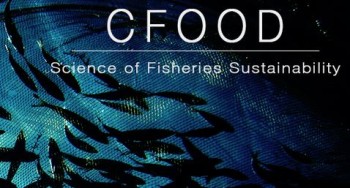 Last week Dr. Geoff Shester, California campaign director for the nonprofit advocacy group Oceana criticized the Pacific Fishery Management Council for the persistence of low numbers of California Sardines. The lack of a population recovery may cause the commercial moratorium to last until 2017. The author explained this sardine population decline as being 93 percent less than it was in 2007. Dr. Shester does not believe this is because of environmental causes like climate change, El Nino, or natural fluctuations in forage fish species however – instead he blames the management body. “They warned of a population collapse and the fishery management body basically turned a blind eye and continued moving forward with business as usual.” Response Comment by Ray Hilborn, University of Washington, Read the rest here 11:49
Last week Dr. Geoff Shester, California campaign director for the nonprofit advocacy group Oceana criticized the Pacific Fishery Management Council for the persistence of low numbers of California Sardines. The lack of a population recovery may cause the commercial moratorium to last until 2017. The author explained this sardine population decline as being 93 percent less than it was in 2007. Dr. Shester does not believe this is because of environmental causes like climate change, El Nino, or natural fluctuations in forage fish species however – instead he blames the management body. “They warned of a population collapse and the fishery management body basically turned a blind eye and continued moving forward with business as usual.” Response Comment by Ray Hilborn, University of Washington, Read the rest here 11:49
Ray Hilborn: Money-driven ENGOs a ‘worrying trend’
 “It’s become a protection racket,” said Ray Hilborn, speaking from his Seattle home. That’s the take of Hilborn — professor at the School of Aquatic and Fishery Sciences, University of Washington — on environmental non-governmental organizations (ENGOs), which he believes are holding increasing sway over the seafood industry. “Some would call it naked extortion, especially for retailers,” he explained. “You need to pay the likes of the WWF [World Wide Fund for Nature] and then follow their advice, just to keep Greenpeace away from your door. Because, if you don’t, Greenpeace will be picketing your store.” Read the article here 13:12
“It’s become a protection racket,” said Ray Hilborn, speaking from his Seattle home. That’s the take of Hilborn — professor at the School of Aquatic and Fishery Sciences, University of Washington — on environmental non-governmental organizations (ENGOs), which he believes are holding increasing sway over the seafood industry. “Some would call it naked extortion, especially for retailers,” he explained. “You need to pay the likes of the WWF [World Wide Fund for Nature] and then follow their advice, just to keep Greenpeace away from your door. Because, if you don’t, Greenpeace will be picketing your store.” Read the article here 13:12
Sylvia Earle says our Taste for “Aquatic Bushmeat” is Killing the Sea – She is wrong!
A recent Newsweek article titled, “Our Taste for ‘Aquatic Bushmeat’ is Killing the Sea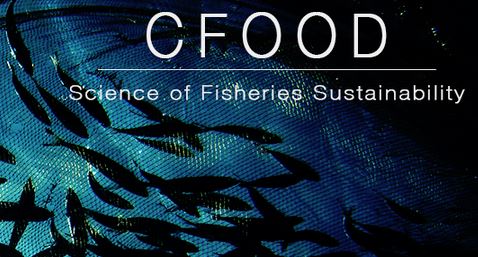 ” comments on the state of worldwide fisheries as food. The article uses interviews with Sylvia Earle and the Northwest Atlantic Marine Alliance to paint a bleak picture of the state of worldwide seafood. The article claims that 90% of fish in the ocean had been removed in the last half-century and 90% of the worlds stocks were unsustainably harvested (since corrected to 29%). Likening fish to “aquatic bushmeat” Sylvia Earle admonishes people who don’t think about what kind of fish they eat or where the fish is from. Read the rest here 13:42
” comments on the state of worldwide fisheries as food. The article uses interviews with Sylvia Earle and the Northwest Atlantic Marine Alliance to paint a bleak picture of the state of worldwide seafood. The article claims that 90% of fish in the ocean had been removed in the last half-century and 90% of the worlds stocks were unsustainably harvested (since corrected to 29%). Likening fish to “aquatic bushmeat” Sylvia Earle admonishes people who don’t think about what kind of fish they eat or where the fish is from. Read the rest here 13:42
Ray Hilborn: Seafood sustainability, certification ‘about money’
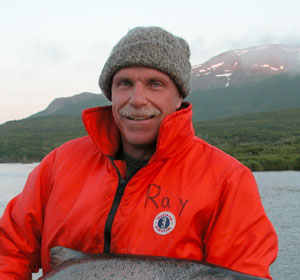 Seafood sustainability and certification is “about money and value – science has largely been lost”. So claims Ray Hilborn, a professor in the School of Aquatic and Fishery Sciences at the University of Washington. Commenting on CFOOD on recent criticisms made by the World Wildlife Fund (WWF) on the Global Seafood Sustainability Initiative (GSSI), Hilborn said seafood sustainability, “at its core, is about the ability to produce food from the sea in the long term.” However, he argued, “the most interesting development in seafood sustainability is the force driving certification, and — spoiler alert — it isn’t consumers. Read the rest here 13:59
Seafood sustainability and certification is “about money and value – science has largely been lost”. So claims Ray Hilborn, a professor in the School of Aquatic and Fishery Sciences at the University of Washington. Commenting on CFOOD on recent criticisms made by the World Wildlife Fund (WWF) on the Global Seafood Sustainability Initiative (GSSI), Hilborn said seafood sustainability, “at its core, is about the ability to produce food from the sea in the long term.” However, he argued, “the most interesting development in seafood sustainability is the force driving certification, and — spoiler alert — it isn’t consumers. Read the rest here 13:59Bering Sea health: Fishing is not a threat
 In their guest column “Saving ocean habitat before it’s drained, Opinion, Feb. 1,” the authors suggest that protecting the Bering Sea canyons would help “save the oceans.” While it is true that the oceans are threatened in many ways, the Bering Sea is not threatened by fishing. It is in fact one of the best-managed fisheries in the world, with annual harvests well below scientific advice on what is sustainable. Read the rest here 07:34
In their guest column “Saving ocean habitat before it’s drained, Opinion, Feb. 1,” the authors suggest that protecting the Bering Sea canyons would help “save the oceans.” While it is true that the oceans are threatened in many ways, the Bering Sea is not threatened by fishing. It is in fact one of the best-managed fisheries in the world, with annual harvests well below scientific advice on what is sustainable. Read the rest here 07:34
Ray Hilborn – Environmental cost of conservation victories – Marine Protected Areas (MPA)
 To establish any net environmental benefit from large ocean MPAs, we must determine what is actually “saved” and at what cost when the saving causes reduced food production. The environmental costs of alternative food production are increasingly available (5, 6), and the costs of closing large marine areas in Australia, the United States, and Europe can be calculated. Read more here
To establish any net environmental benefit from large ocean MPAs, we must determine what is actually “saved” and at what cost when the saving causes reduced food production. The environmental costs of alternative food production are increasingly available (5, 6), and the costs of closing large marine areas in Australia, the United States, and Europe can be calculated. Read more here




































